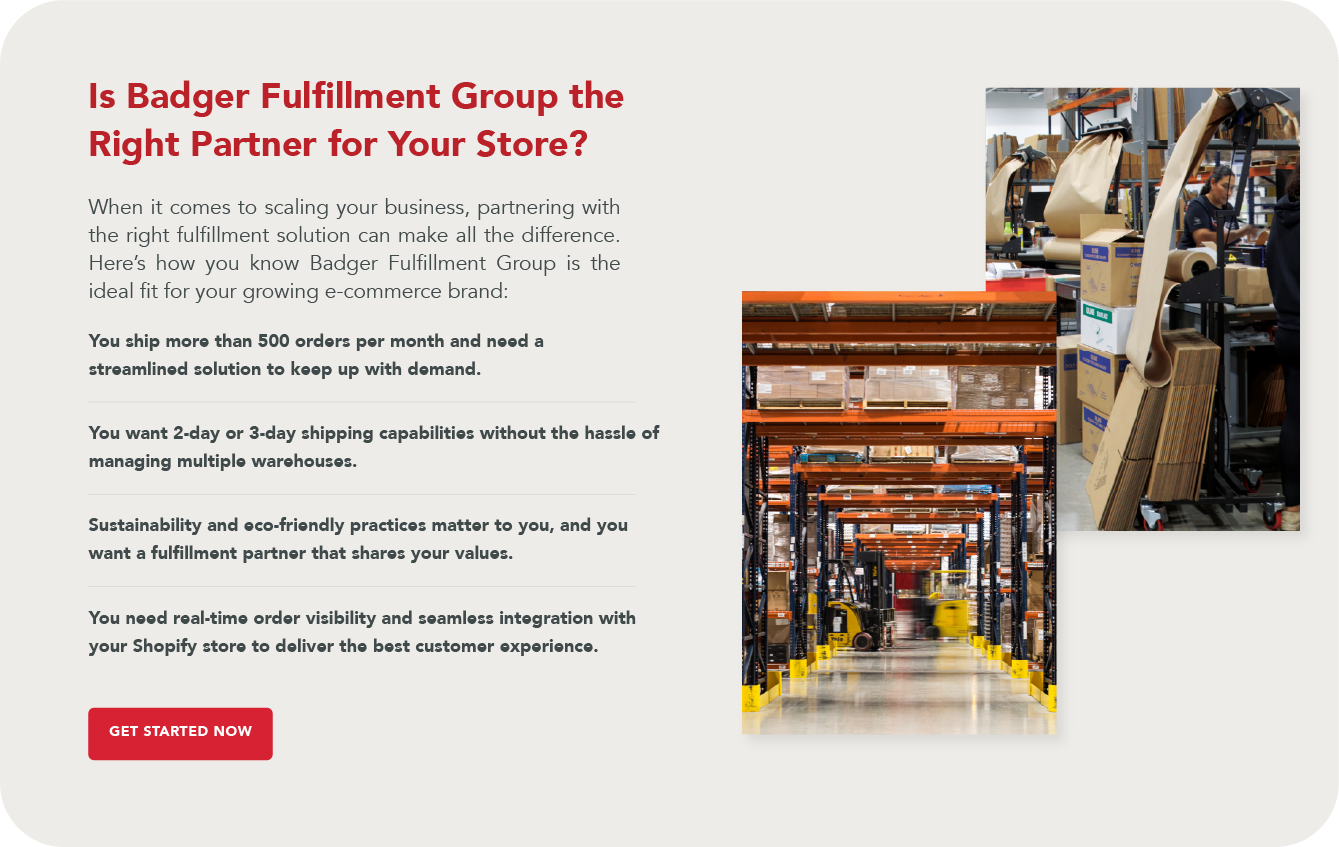Logistics can be a challenge for businesses of any size. From managing inventory to meeting delivery deadlines, every piece matters. A third-party logistics provider (3PL) can simplify that puzzle, helping your business improve speed, accuracy, and scalability. Understanding when and how to work with a 3PL is a critical step toward building a smarter, more efficient logistics strategy.
Identifying Your Business Needs
Before choosing a 3PL partner, take time to define your logistics goals and pinpoint where your current setup may be falling short. A thorough review of your systems and workflows can uncover inefficiencies, unnecessary costs, or barriers to growth.
Step 1: Evaluate Your Current Logistics Setup
Ask yourself:
* Are we meeting our shipping timelines consistently?
* Do we have enough storage to handle peak season demand?
* Is our team overloaded with managing inventory, returns, or fulfillment?
* Are we experiencing frequent shipping errors or delivery complaints?
* Can we track inventory accurately across all our sales channels?
If you’re seeing issues in any of these areas—or if logistics are consuming too much of your team’s time—it may be time to consider outside support.
Step 2: Define What You Need Help With
3PLs vary in their service offerings. Identify the areas where you want additional support:
* Order Fulfillment: Efficient picking, packing, and shipping
* Warehousing: Flexible and secure storage options
* Inventory Management: Real-time tracking across channels
* Returns Processing: Faster and more organized reverse logistics
* Kitting and Assembly: Product bundling or customization
* Freight Optimization: Access to discounted rates and smarter shipping
Checklist for internal assessment:
☐ We need more warehouse space or lower storage costs
☐ Our fulfillment team can’t keep up with current order volume
☐ We want faster, more accurate shipping
☐ We sell on multiple platforms and need integrated inventory tracking
☐ Our returns process is inefficient or hard to manage
☐ We need help bundling or customizing products
☐ We lack the tech tools to automate fulfillment or track inventory
Step 3: Set Clear Goals for Partnering With a 3PL
Don’t just outsource to save time. Partner with a provider who helps you grow.
* Scale without increasing headcount or warehouse space
* Improve delivery speeds to enhance customer satisfaction
* Reduce errors through automation and trained fulfillment teams
* Lower shipping costs through pre-negotiated carrier rates
* Expand into new markets without the overhead
Write out your logistics goals so you can measure success. For example:
* Short-term: Improve inventory accuracy by 95 percent within three months
* Long-term: Offer two-day shipping nationwide within the next year
Once you’ve mapped your needs and goals, it’s time to explore the value a 3PL can bring.
Understanding the Benefits of Using a 3PL
A 3PL is more than a fulfillment partner—they’re a growth partner. Here’s what they can help you achieve:
1. Cost Efficiency
* Reduce storage and labor costs by sharing warehouse infrastructure
* Access bulk shipping discounts
* Minimize shipping errors and lost inventory
* Avoid costs related to staffing, training, and equipment
2. Scalability and Flexibility
* Quickly adjust to seasonal peaks or new product launches
* Add or remove services based on real-time business needs
* Expand into new regions without opening your own facilities
3. More Time for Core Business
* Shift focus back to sales, marketing, and customer experience
* Eliminate time spent managing logistics operations
* Streamline internal workflows and reduce team workload
4. Advanced Logistics Technology
* Real-time inventory tracking across platforms
* Automated order processing and routing
* Smart dashboards for performance reporting
* Seamless integrations with your existing eCommerce systems
Case Study: Aspen Clean and Jewelry Brands
Real-world results show how a 3PL can transform operations. Aspen Clean improved both communication and logistics efficiency by working directly with an onsite account manager at Badger Fulfillment Group. Similarly, this jewelry brand used Badger’s tailored solutions to streamline their fulfillment and reduce operational strain—allowing them to focus on scaling their business.

Transitioning to Using a 3PL
A smooth transition requires clear internal communication and planning. Your team needs to understand what’s changing, why it matters, and how their roles may shift.
Here’s how to guide the process:
* Hold a kickoff meeting to explain the partnership and expected benefits
* Assign key team members to coordinate with your 3PL’s onboarding team
* Document and share new workflows, especially around inventory and fulfillment
* Provide training on new systems or tools being introduced
* Set up a feedback process to quickly address questions or issues
When your team is informed and engaged, you set the stage for a seamless partnership.
Helpful Hint
Start small with a pilot program. Before handing off your entire operation, test your 3PL with a limited product line, region, or sales channel. This gives you a chance to evaluate performance, communication, and compatibility—without fully committing upfront.

Tips for Building a Strong 3PL Partnership
A great relationship with your 3PL doesn’t happen by accident. These strategies can help maximize the value of your partnership:
1. Stay Proactive with Communication
* Schedule regular meetings to review performance and upcoming needs
* Be open about changes in order volume or product strategy
* Designate clear contacts on both sides for faster resolution
2. Leverage Their Expertise
* Ask for suggestions to improve packaging, shipping, or fulfillment flow
* Include them in strategic planning discussions when scaling
* Use their data insights to identify cost-saving opportunities
3. Set Clear Expectations
* Define service levels, response times, and communication standards
* Share forecasts and growth plans in advance
* Make sure everyone understands who handles what
4. Plan for the Unexpected
* Build contingency plans for supply chain delays or volume surges
* Test backup procedures to avoid disruptions
5. Keep the Customer in Focus
* Monitor shipping accuracy and delivery speed
* Partner on refining your returns experience
* Align on packaging quality and fulfillment standards
By treating your 3PL like a strategic extension of your team, you build a logistics engine that supports every stage of growth.
Ready to Explore 3PL Solutions?
Whether you’re looking to streamline fulfillment or scale your operations, partnering with the right 3PL can make all the difference. If you’re curious about how Badger Fulfillment Group can support your business goals, get in touch with our team or explore our services to learn more.
Frequently Asked Questions About Using a 3PL
- What is a 3PL? A third-party logistics provider (3PL) is a company that handles storage, inventory, and shipping for businesses, making it easier to manage and deliver products to customers. Learn more here.
- How does a 3PL differ from a 4PL? A 3PL handles specific logistics functions like warehousing and shipping, while a 4PL manages the entire supply chain, including coordinating multiple 3PLs and providing strategic oversight.
- What services do 3PL providers offer? 3PL providers offer services such as warehousing, inventory management, order fulfillment, shipping, and returns
- Can a small business benefit from using a 3PL? Yes, a small business can benefit from using a 3PL by gaining access to expertise, technology, and cost efficiencies that improve logistics operations and customer satisfaction.
- How do I ensure data security with a 3PL? Ensure data security with a 3PL by selecting a provider with strong security protocols, conducting regular audits, and establishing clear data handling and protection agreements.
- What are the risks of using a 3PL and how can I mitigate them? Risks include loss of control over logistics and potential data breaches, which can be mitigated by thorough vetting of providers, clear contracts, and maintaining good solid communication.
- How long does it take to transition to a 3PL? Transitioning to a 3PL typically takes several weeks to a few months, depending on the complexity of your logistics needs and the readiness of both parties.
- What role does technology play in a 3PL partnership? Technology plays a crucial role in a 3PL partnership by enabling real-time tracking, data analytics, inventory management, and seamless integration with your existing systems.
- How can a 3PL help with international shipping? A 3PL can help with international shipping by managing customs documentation, ensuring compliance with regulations, and optimizing shipping routes and costs.
- What are some common misconceptions about using a 3PL? Common misconceptions include thinking 3PLs are only for large businesses, that they are too costly, or that they result in a loss of control over logistics operations.



